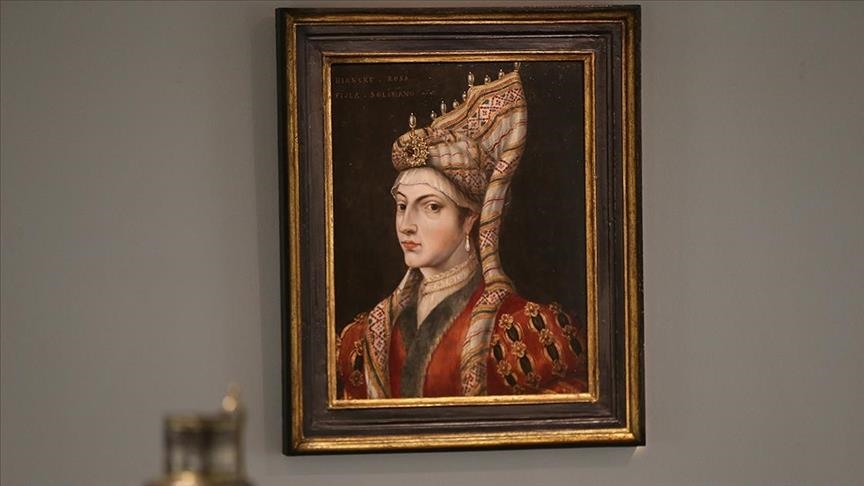LONDON, UNITED KINGDOM
Sotheby’s, one of the world’s largest brokers of fine and decorative art, jewelry and collectibles, will host an auction in London on Oct 27 called “Arts of the Islamic World & India.”
The auction by the British-founded firm will celebrate the achievements of artists and craftsmen from the Islamic world for more than 1,000 years.
One of the highlights is an oil portrait of Hurrem Sultan, Suleyman the Magnificent’s famous wife, known in the West as Roxelana. The painting is from the late 16th-early 17th century.
“We’re thrilled to have this painting of Roxelana who was the wife of Suleiman the Magnificent. She started off as a concubine in his harem and rose amongst the ranks to become one of the most powerful women at the court, so she’s incredibly inspirational,” Sotheby’s Deputy Director Alexandra Yasmina Roy told Anadolu Agency.
Originally from what is now western Ukraine, Roxelana entered Suleyman’s harem and quickly became his favorite.
He broke convention by allowing her to bear not just one son, but four. He then broke convention again by marrying her.
She was influential not only as his wife but was also at the heart of helping him run the empire. While Suleyman was away on campaigns, she would write to him and keep him updated on developments in the capital.
She was also a major sponsor of architecture and charitable foundations, including in Jerusalem.
Roy said the painting was estimated between £100,000 to £250,000 ($137,000 to $343,000).
She joined Sotheby’s in 2011 and since has been in charge of researching and cataloging the works of art in the Arts of the Islamic World series, which is held biannually in April and October.
Roy is of Egyptian and French descent and grew up in Oman and Yemen. She has traveled extensively across North Africa and the Middle East.
She also spoke about a pair of items that have never previously been available on market.
They are two extraordinary pairs of Mughal spectacles from the 17th century — one with emerald lenses and the other with diamond lenses.
They were originally made from gemstones that would have weighed more than 300 and 200 carats, respectively.
The origin can be traced to the Muzo mines in Colombia.
“These were the most famous emerald mines in the 17th century,” Roy said.
The diamond lenses most probably came from the famous Golconda mines of southern India.
“It’s inconceivable today to make anything like that,” Roy said. “For me, they are invaluable in a certain sense.”
Nevertheless, she said they are estimated between £1.5 to 2.5 million ($2 million to $3.4 million) each.
Other highlights include a silver and gold brass candlestick attributed to Mosul from around 1275; a richly decorated Qur’an section from the 13th century; an important Safavid silk and metal thread Polonaise rug; the largest known Iznik pottery ‘grape’ dish, circa 1530 as well as scientific instruments, including an astrolabe signed by Muhammad ibn Ahmad al-Battuti and a Mughal engraved brass celestial globe from the 17th century.

